
Maria Hellgren
mariahellgren@telia.com
Master programme student Ht-2003 – Vt-2005
IFM/Biology
Thesis abstract
The aim of this study was to compare behaviour in the two most
common types of housing for dairy cattle in Sweden, tie-stall and
loose-house. The tie-stall was of the so-called short-stall model and
the loose-house of the cubicle model. It was assumed that the pasture
would reflect the most natural behaviour, so it was used as a baseline.
The overall hypothesis was that there would be higher welfare in the
loose-house than in the tie-stall since the cows can move around freely
in the loose-house. The behavioural observations were divided into five
situations; pasture, loose-house after intake, tie-stall after intake,
loose-house during autumn and tie-stall during autumn. Observations
were conducted both on individual behaviours and group synchronisation.
The loose-house does not seem to invite to the same behavioural pattern
as on pasture, there where lower group synchronisation, less activity
and almost no mounting (heat behaviour) in the loose-house. Some of the
behavioural differences seen in the indoor housing systems indicated
welfare problems. There was significantly higher frequency of the
possibly stereotypic behaviour, stepping and lying-down difficulties in
the tie-stall. In the loose-house there was a tendency for lower group
synchronisation, higher heart rate, shorter eating duration and more
rising up difficulties. The problems in the tie-stall could though be
considered as more severe. Heart rate measures were made to see if
there was any difference in stress between the different milking
procedures in the systems. No differences in heart rate were found.
Keywords: behaviour, dairy cattle, heart rate, loose-house, milking, pasture, tie-stall
Behavioural effects of housing in dairy cows
Introduction
In Sweden there are mainly two types of housing systems for dairy cows used, tie-stalls and loose-houses. In a tie-stall are the cows tied by the neck next to the foddertable while they can move around freely in a loose-house. The freedom of movement in the loose-house probably gives them better opportunities to perform their natural behaviour while they can be restricted by the tie in the tie-stall. Apart from these housing systems are Swedish cows kept on pasture for 2-4 months each summer, there they are free from all kinds of restriction. The aim of this study was to compare the cow behaviour in the loose-house with the tie-stall to see if there are any behavioural problems.
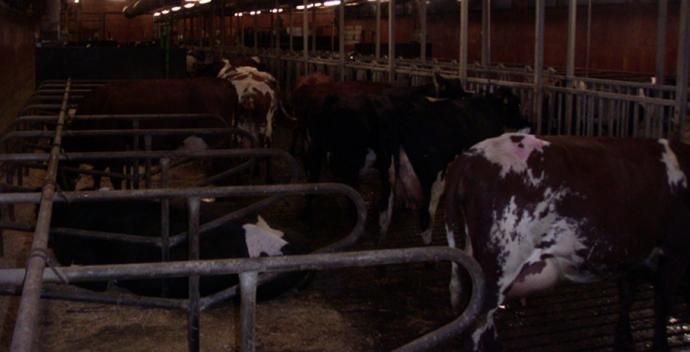
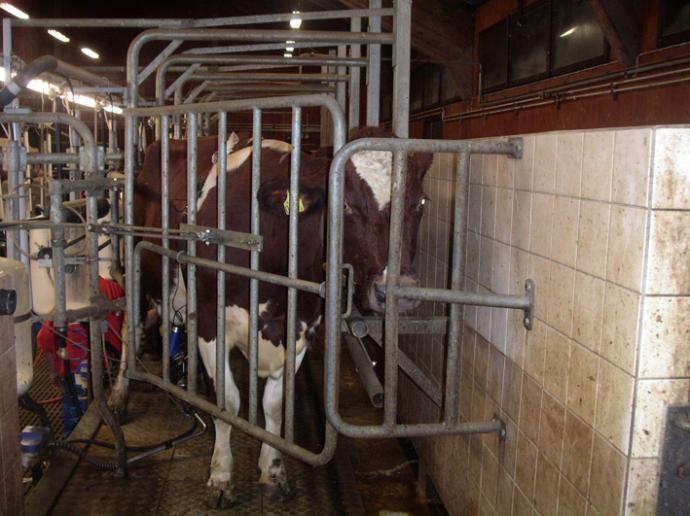
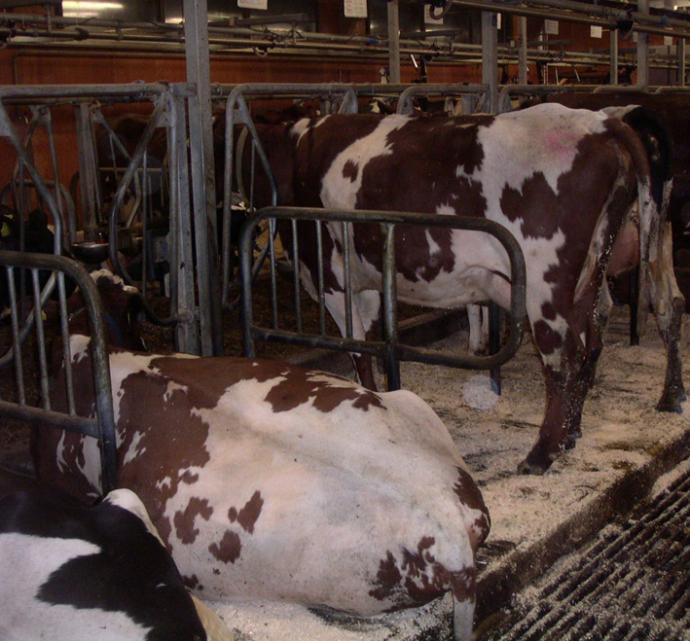
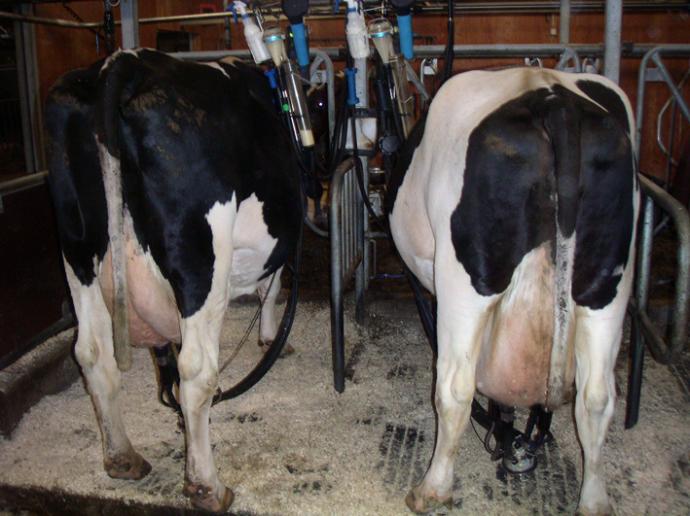
Method
Observations of individual behaviours and group synchronisation were
made in both the tie-stall and the loose-house. These were then
compared to the behaviour on pasture, since it could be considered as
the most natural. Intensive behaviour observations were made right
after the intake from pasture, in both systems, to see if the intake
caused stress. There were also heart rate measurements made in the
tie-stall and the loose-house. These measurements were made before,
during and after the milking.
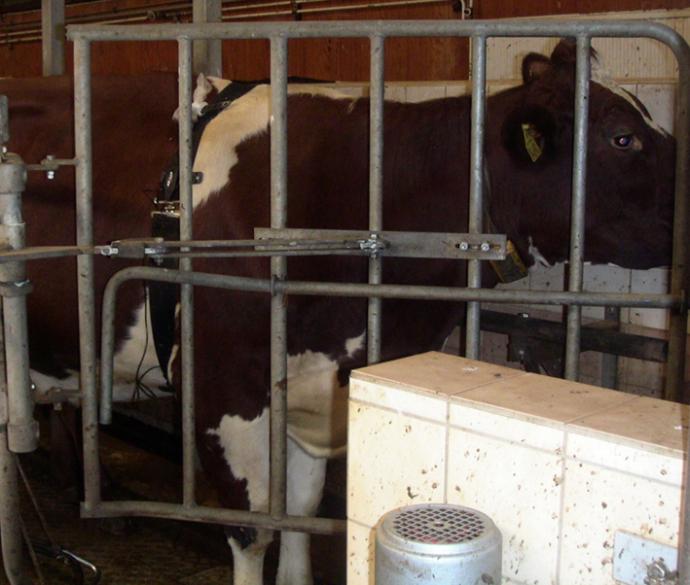
Results and discussion
• There was a tendency for less activity in the loose-house than in the
tie-stall. When the cows were active they were mostly eating, thus the
time spent eating was probably shorter in the loose-house. This could
be considered as a problem since it is natural for cows to eat for long
periods, the highest activity, and thereby the longest eating duration,
was seen on pasture.
• Despite the low activity in the loose-house was there a tendency for
higher heart rate than in the tie-stall. This implies that the cows in
the loose-house could be more stressed than the tie-stall cows.
• Cows rise up and lye down by a special movement pattern which is
innate. It is very important that the cow has the possibility to
perform this movement without disturbance. In this study there was a
tendency for more difficult rising-ups in the loose-house while they
had considerably more difficulties lying-down in the tie-stall. Thus,
there were problems in both housing systems with this behaviour.
• When the cows were on pasture they had a high group synchronisation
(they tended to perform the same behaviour at the same time). In the
housing systems there was a tendency for lower group synchronisation in
the loose-house than in the tie-stall. There was lower synchronisation
in both than on pasture, thus a high synchronisation could be
considered as more natural.
• When animals are stressed and not comfortable with their situation
they can develop stress related behaviours. In this study it was seen
that the cows were standing at the same spot lifting and setting down
their legs, stepping, for long periods of time. Stepping is probably a
stress related behaviour and thereby a problem. It was performed
considerably more in the tie-stall than in the loose-house.
• In the tie-stall there were some differences in behaviour seen just
after intake in comparison to the autumn. The frequency of explorative
behaviours and difficult lie-downs were higher. High frequencies of
explorative behaviours could be caused by poor stimulation and
decreased possibilities of social contact. Thus, both these differences
could be behavioural problems.
• The problems with low activity, low group synchronisation and
difficult rising ups were seen in the tie-stall as well but not to the
same extent as in the loose-house.
Conclusions
From this study it was concluded that there are behavioural problems in both the tie-stall and the loose-house. The problems in the tie-stall could though be considered as more severe. In the tie-stall there were also behavioural differences seen in connection to the intake from pasture. It was also concluded that the loose-house, despite the freedom of movement, does not seem to invite to the same behavioural pattern as on pasture.
Responsible for this page:
Director of undergraduate studies Biology
Last updated:
06/09/05
